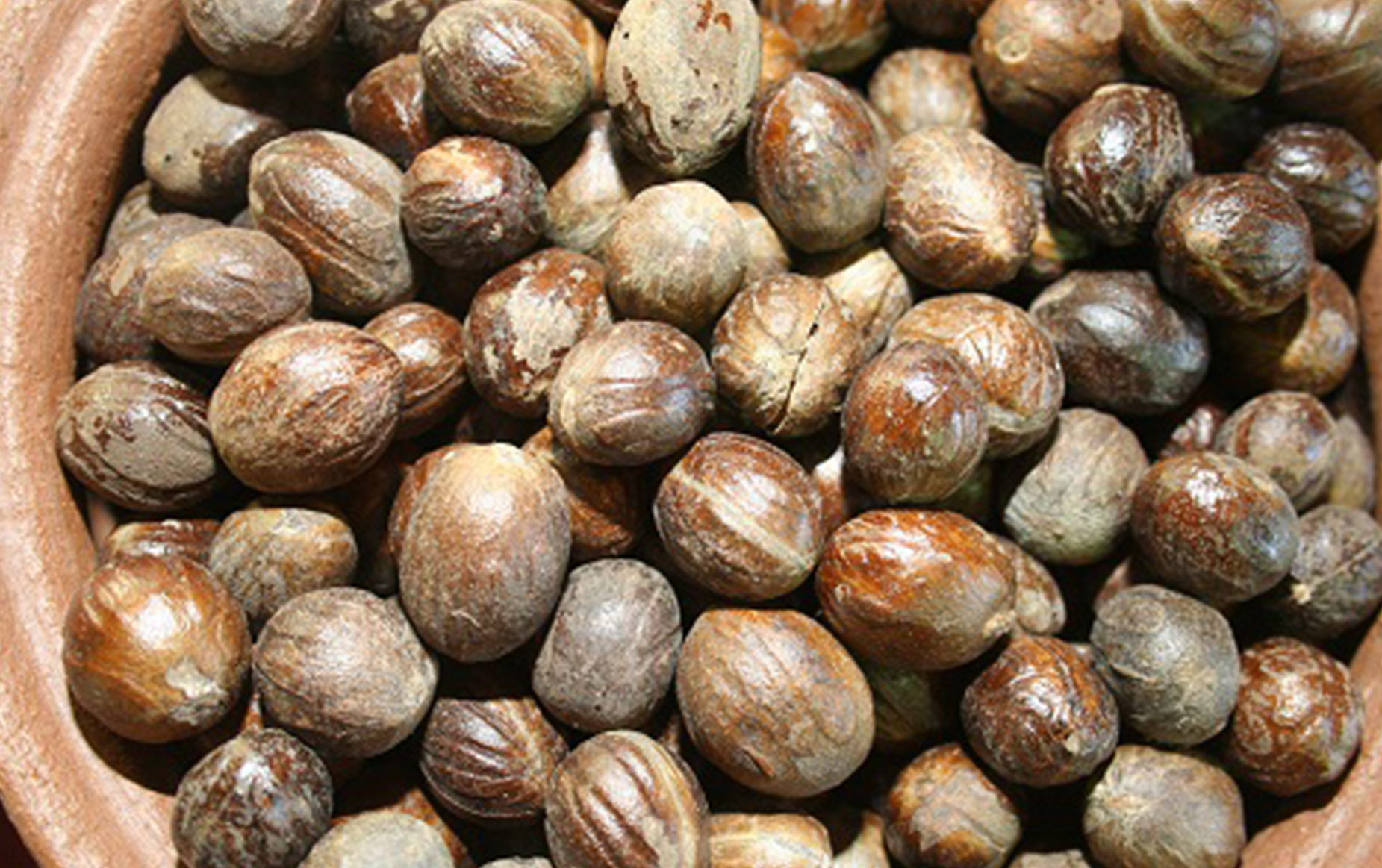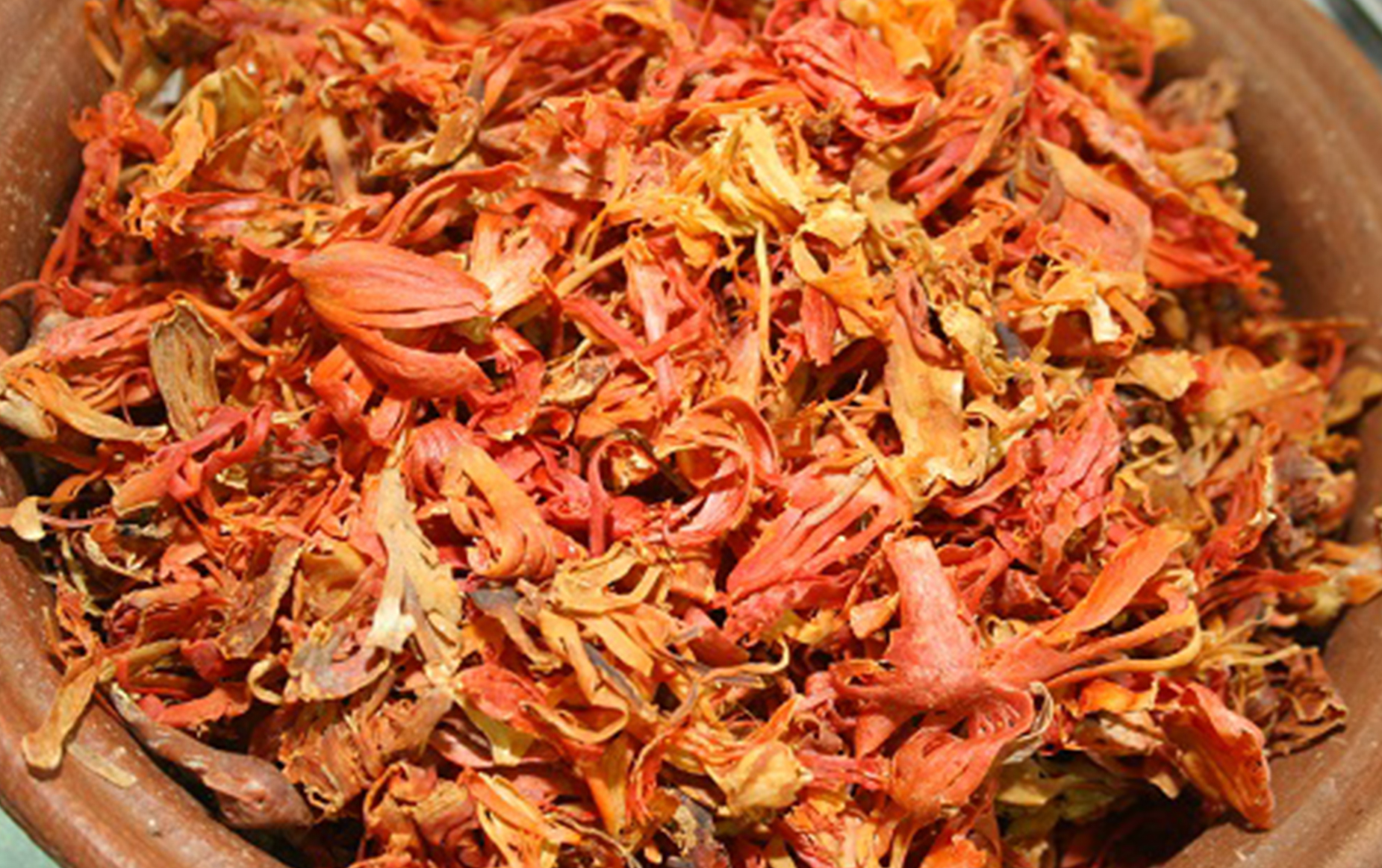From ancient times, Nut meg has been a most prized spice. In 19th century nut meg was only grown in Banda Island or spice Island in Eastern Indonesia which also served as an entrepot destination for Cloves. There is an evidence indicating that Nutmeg had been brought to Sri Lanka before it’s formal introduction by merchants who travelled on the silk route.
Nut meg and Mace are two separate spices derived from the fruit of tree Myristica fragrans of the family Myristicaceae. Myristica fragrans is the only tree in the world that produces two separate spices. The fruit contains hard pit which is a Nut Meg, while the lacy red membrane which surrounds it is called Mace. During ripening the fruit’s colour changes to Yellow and the pericarp is split in to two halves exposing the seeds. The shiny seeds are covered by a red aril. The flavour of Mace is softer and fruitier than that of Nut meg and is used in delicately flavoured recipes.it consists of essential oils which give out its distinct flavour and aroma.
Apparently Nut meg prefers cooler climate, so it is mainly cultivated in Sri Lanka’s central regions. Sri Lanka has developed an Intricate chemical composition and a flavour complex based on the unique terroir of the country and is identified under the Geographical indication of Ceylon Nut meg. Sri Lanka serves around 5% of the global demand for Nut meg and 7% of the local demand for Mace.


